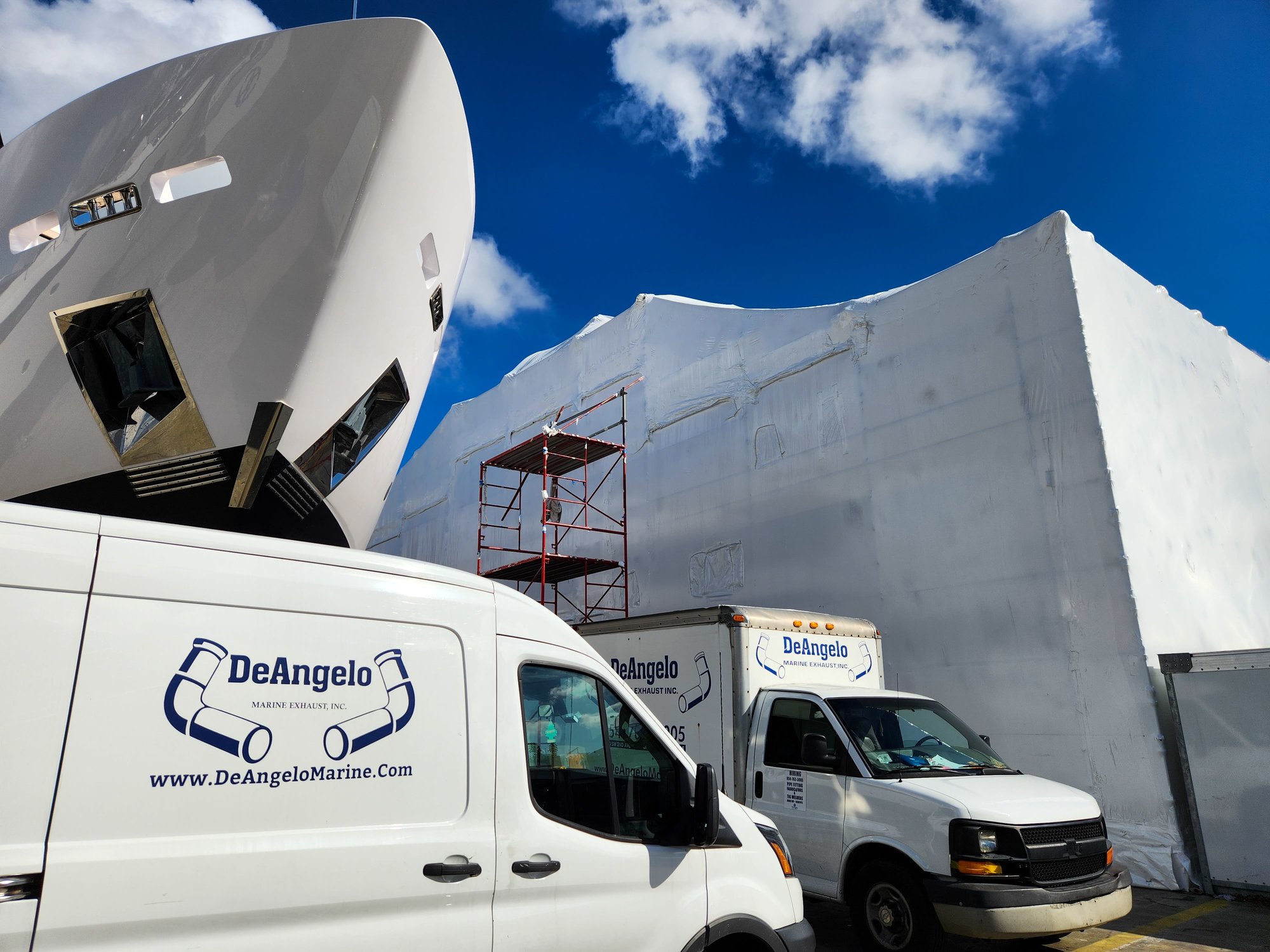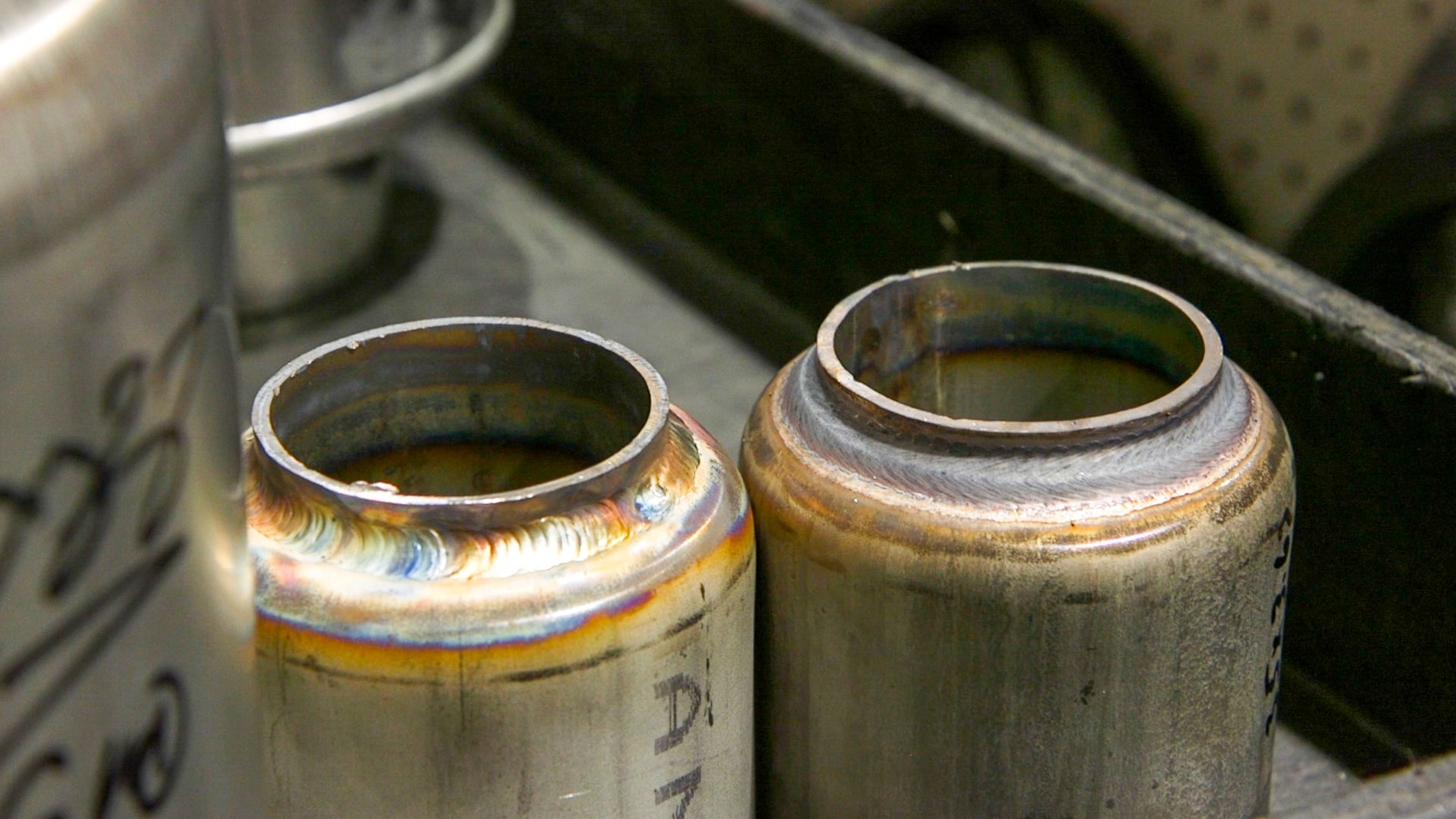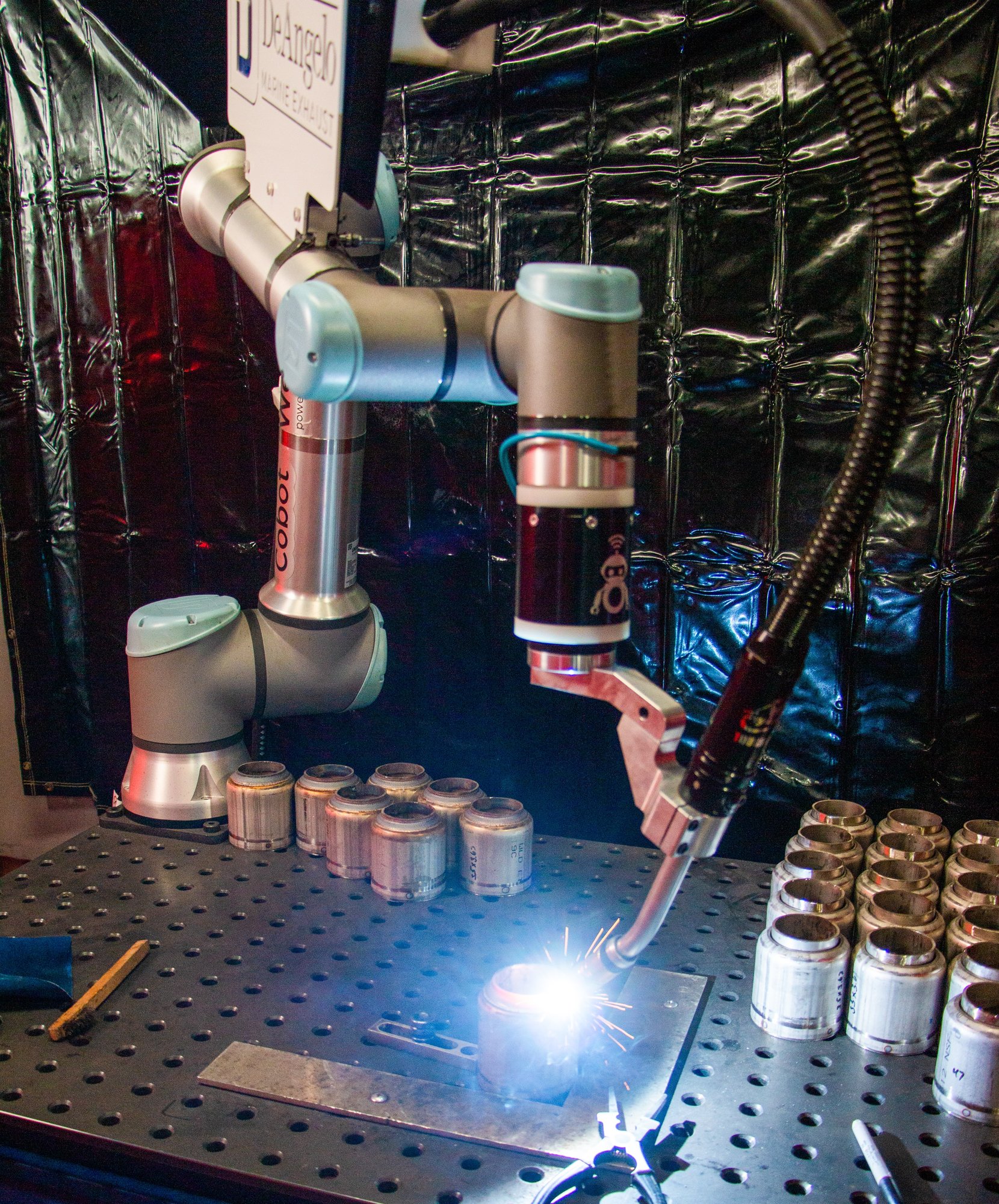
Real-world applications often speak volumes about the practical benefits of technological advancements. DeAngelo Marine's transition from manual TIG welding to MIG welding with the help of a cobot demonstrates how automation can greatly improve welding processes.
DeAngelo Marine Exhaust is a leading industry expert in the field of marine exhaust systems. With over four decades of experience, they specialize in designing, manufacturing, and installing reliable, high-quality exhaust systems for a wide range of marine vessels such as yachts, commercial ships, and naval vessels.
For DeAngelo Marine, the decision to switch was not made lightly. They found themselves grappling with labor shortages and the mounting pressure of pending orders from some of the finest boat builders, naval architects, and engine companies in the world.
We’re dealing with some of the finest boat builders, naval architects, and engine companies in the world. The last thing I want to do is solicit them, promise them the world, get an order for a hundred ship sets, and be two weeks too late. That’s how to lose an account and never get it back again. So we’re at an impasse where we’re experiencing some significant growing pains, and it's time to scale up."
While exploring automated solutions, DeAngelo's attempts to find a reliable automated system proved disappointing.
"I had sent out parts to about seven of the big welding companies to see if they can do a demo weld," says Justin, "and a lot of those companies struggled to send me back parts that match our quality."

The turning point arrived when Hirebotics stepped onto the scene with their cobot welding solution. Not only did they promptly return a part demonstrating their welding proficiency, but they also had the team welding parts in a matter of minutes.
"Twenty minutes later, I'm running parts like I've been running robots my whole life," he shared, highlighting the ease and simplicity of the Cobot Welder.
The impact of the Cobot Welder on DeAngelo's operations was immediate and transformative.
The cobot's ability to perform at a speed of "20 inches a minute" was a significant jump from the "2 to 5 inches a minute if you're good" that manual TIG welding allowed.
This marked increase in speed enabled DeAngelo to clear their daunting backlog in just a few weeks.
As for cost savings, Justin shares a compelling example:
"The day that we were installing the cobot we received a large order from the Coast Guard, now that part roughly requires 200 inches of welding altogether. It's five welds that need to be done in a sequence. If I'm using TIG welding by hand that's a hundred minutes to do one, but if I'm doing 20 inches a minute with the cobot that's 10 minutes to do one. That one order paid for my first cobot”
Looking ahead, Justin envisions a future where "our seven lead fabricators have a cobot with a UR arm on all their fabrication tables."
Their experience serves as an instructive blueprint for companies considering investing in a Cobot Welder.
DeAngelo Marine's journey to automate their TIG welding operation offers valuable insights for other manufacturers considering a Cobot Welder. Here are some key takeaways from their experience:

The impressive transformation of DeAngelo Marine from investing in a Cobot Welder shines a bright light on the significant benefits that come with embracing automation in the welding industry.
With the right approach and technology, automation can significantly enhance efficiency, quality, and productivity in welding processes, delivering tangible business benefits.
2025 Copyright. All rights reserved. Privacy Policy | Sitemap | Blog Sitemap